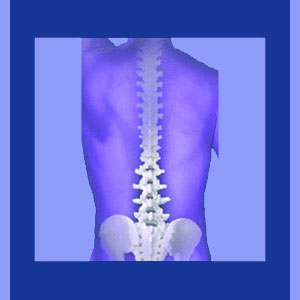
Sciatica caused by injury is a common diagnostic conclusion when symptoms follow a traumatic event. However, this verdict is not always accurate, since sciatica might be blamed on perceived injury when no actual anatomical damage has occurred, as well as be unfairly linked to actual injury that is coincidental to the symptoms. Injury is a great scapegoat in the back and neck pain sector of healthcare, with many patients suffering terrible mind and body effects due to the overuse of the term and the lack of evidence proving that any lasting damage has been done.
Back and neck injuries can surely happen. Injuries occur every day on a massive scale. People can hurt themselves or be hurt in endless ways and some of these traumas are surely severe and will produce enduring symptoms. However, the body is designed to heal and heal it will, given all but the most extreme circumstances. Healing should bring an end to pain that is a direct result of the injury. Actually, pain will cease long before full healing has occurred. However, the factual statistics of sciatica defy these anatomical facts. Why does sciatica persist for way longer than its clinical expectations in virtually every patient?
This vital essay discusses the role of injury in the generation of sciatica symptoms. We will discuss actual injury leading to sciatica, perceived injury leading to sciatica and the misdiagnosis of sciatica as a direct result of either injury or perceived injury. Hold on; this will be a winding road, but is a must-read for anyone who blames their sciatica pain on an injury.
Types of Sciatica Caused by Injury
Injury can occur to the spine or to the sciatic nerve itself. Either way, sciatica symptoms can result. The sciatic nerve is formed by 5 neurological roots located between L4 and S3 in the lower reaches of the vertebral column. This lumbosacral spinal area is the zone that degenerates more than any other location in the spine and is also an area that is relatively easy to injure, since it bends and flexes frequently and considerably, often under great stress loads.
Many factors can cause injury to the backbone and this injury can hasten and worsen the type and degree of structural deterioration in the lumbosacral spine. Injury can occur directly to the spinal nerve roots, such as when severed, lacerated or otherwise damaged by trauma. However, more commonly, injury will affect some other structure that will subsequently affect the spinal nerve roots, such as a herniated disc or fractured vertebra that compresses one or more of these nerves.
Injury might affect the spinal cord far above the lumbosacral spine, potentially damaging the tracts of cells that will eventually be involved in messaging between the sciatic nerve and the brain. Injury can also affect the fully formed sciatic nerve, such as in the case of compression, laceration or penetration of the large nerve in the buttock or leg.
Some of the most common causes of direct injury to the sciatic nerve or its component nerve roots include motor vehicle collisions, falls, sporting traumas, acts of violence and surgical interventions.
Sciatica Caused by Perceived Injury
Not all “injuries” actually involve anatomical damage of any significant degree. Some injuries produce very transient pain and the impression of being hurt, even though there are no lingering consequences. We see many patients who are in pain and believe that they hurt themselves doing some particular activity or during some specific event. However, there is no evidence of any bodily injury, despite the patient complaining that the event brought on pain that has not stopped since.
The mind is very powerful and the suggestion of injury is enough to produce pain in all of us. We have been conditioned to expect long lasting pain when we are injured, through exposure to opportunistic doctors, medical advertisements and a very misinformed legal system. The nocebo effect of continuing warnings about the effects of injury throughout life have most humans expecting to be injured at the slightest traumatic happening. All of this is a complete fabrication. The human body is unbelievably strong and capable. One only needs to look at the diversity of accomplishments we collectively achieve on a daily basis with our bodies to understand how durable we actually are. We are not easily injured; but instead are naturally resistant to injury.
This is not to say that injuries do not occur, since they do with regularity. However, in most instances where an “injury” is reported, the actual damage is not noteworthy and certainly nothing that could ever produce a chronic pain syndrome, such as sciatica, through anatomical factors alone. This is indisputable scientific fact.
If we had a dollar for each time a patient has informed us that their sciatica started after an innocent event, we would be the richest people on Earth. Some of the commonly cited explanations for decades of pain include lifting a minor weight (under 20 pounds), opening a window, sneezing, coughing, getting up from a seated position or working around the home. Do these sound like the ideal circumstances for real injury to occur?
Truths About Sciatica Caused by Injury
Regardless of whether actual injury occurs or not, we often take our clue to blame pain on a traumatic event from our doctors. If a doctor diagnoses us with an injury that has caused us to suffer sciatica, we tend to believe them. We also tend to hold on to their diagnosis, even if it becomes quite apparent that the verdict is completely mistaken, as in cases where 20 years of intractable pain are blamed on normal disc degeneration said to have been caused by bending to pick up a 10 pound box. This is preposterous.
Many injuries will leave anatomical evidence, but are not necessarily the direct cause of sciatica. They are incidental and completely non-influential occurrences to the sciatica symptoms. Of course many traumas do not produce actual and verifiable evidence of injury, but are still blamed by doctors as the origin of sciatica. Misdiagnosis of the root causes of sciatica is the single most widespread and significant problem facing patients today.
It is vital to remember that the body has a main directive imparted by millions of years of natural engineering. This primary function is to heal. The body heals each day it is alive and this imperative is so strong that much of the body continues to heal for a short time even after death. We know all this as fact, but we still subscribe to the idea that minor injuries or even nonexistent perceived injuries are the main reasons to explain the horrific types of chronic sciatica pain blamed upon them. Are you ready to think outside the box and get to the heart of why you really have sciatica? We can help. Start by reading our comprehensive section on sciatica causes.





